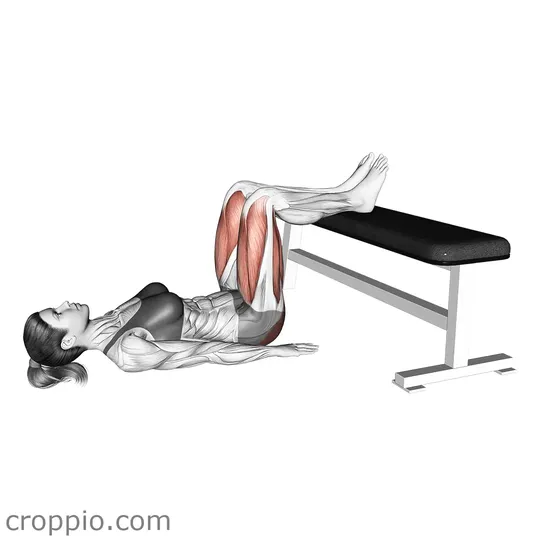Elevated Glute Bridge

Muscles Involved
The elevated glute bridge primarily targets the gluteus maximus, which is the largest muscle in the buttocks, responsible for hip extension and stabilization. Additional muscles engaged during this exercise include the hamstrings in the back of the thigh, which assist in hip extension, as well as the erector spinae muscles in the lower back that contribute to spinal stability. Secondary muscles such as the quadriceps, hip flexors, and calves are also involved to a lesser extent, helping to support the movement and maintain balance throughout the exercise.
Top Mistakes
- Failing to maintain proper form, which can lead to strain on the lower back instead of focusing on the glutes.
- Hyperextending the lower back at the top of the movement rather than keeping the torso neutral, which can cause injury.
- Not engaging the core, resulting in reduced stability and effectiveness of the exercise.
- Placing the feet too far from the shoulders, which can prevent adequate glute activation.
Execution Tips
- Begin by finding an elevated surface, such as a bench or step, and lie on your back with your shoulders resting on it.
- Position your feet flat on the ground, shoulder-width apart, and close enough that your knees are at a 90-degree angle when you lift your hips.
- Engage your core and glutes before initiating the movement. Press through your heels to lift your hips towards the ceiling.
- Keep your knees directly above your ankles and ensure no excessive arch occurs in your lower back.
- Hold at the top for a second or two, focusing on contracting your glutes, before lowering back down in a controlled manner.
Workouts
Incorporating the elevated glute bridge into your workout routine can greatly enhance strength and stability in the lower body. Aim for 3 sets of 10-15 repetitions, ensuring you maintain proper form throughout. As you gain strength, consider adding variations such as single-leg elevated glute bridges or incorporating weights by holding a barbell or dumbbell at your hips. This exercise pairs well with squats, deadlifts, or lunges for a comprehensive lower-body workout.
Conclusion
The elevated glute bridge is a highly effective exercise for strengthening the glutes, improving lower back stability, and enhancing overall core strength. By avoiding common mistakes and following proper execution techniques, you can optimize your performance and gain significant benefits, including better athletic performance, improved posture, and a well-defined posterior chain.



